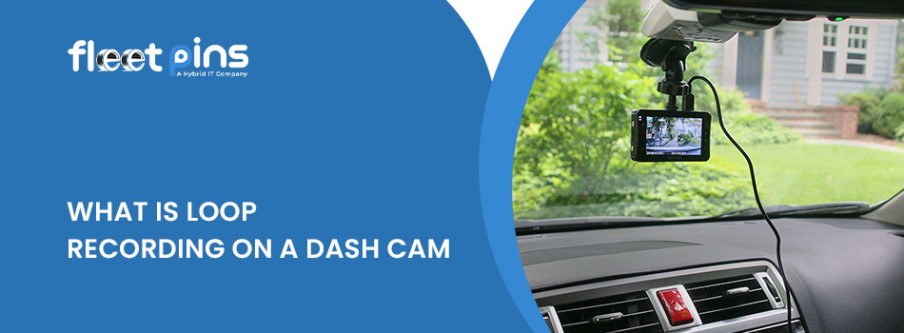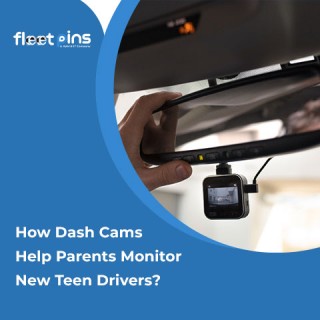
- On 2024-08-15
What is Loop Recording on a Dash Cam? Essential Guide and Benefits
Dash cams have become increasingly popular due to their ability to provide crucial evidence in case of accidents, disputes, or other on-road incidents. One of the essential features that make dash cams so reliable and efficient is loop recording. But what is loop recording on a dash cam, and why is it so important?
What is Loop Recording?
Dash cam Loop recording is a feature that allows a dash cam to continuously record video footage, even when the storage space is full. Instead of stopping the dash cam loop recording, the dash cam will overwrite the oldest video files with new footage. This ensures that the camera never stops recording, capturing everything that happens on the road without requiring manual intervention to free up storage space.
Benefits of Loop Recording on Dash Cams
- Continuous Recording: Loop recording guarantees that your dash cam is always active, providing continuous video evidence. You don't have to worry about the camera stopping due to a full memory card.
- Efficient Use of Storage: This feature makes the most out of the available storage space. By automatically deleting older, less relevant footage, you can be sure that the most recent events are always recorded.
- No Need for Manual Deletion: Without dash cam recording, you'd need to regularly delete old files to make room for new ones. Loop recording automates this process, saving time and ensuring you don't accidentally miss capturing important footage.
- Peace of Mind: With loop recording, you can drive with confidence, knowing that every moment on the road is being captured. This is especially useful in the event of an accident, where you need recent footage as evidence.
You May Also Read: Benefits of Dash Cams for Fleet Vehicles
How Does Dash Cam Loop Recording Work?
Dash Cam Loop recording works by dividing the recorded video into smaller segments, typically ranging from 1 to 5 minutes. Once the memory card is full, the dash cam starts overwriting the oldest segments with new recordings. For example, if your dash cam is set to record in 3-minute segments and the storage is full, it will delete the oldest 3-minute clip to save the new one.
Most dash cams also allow you to lock specific files, preventing them from being overwritten. This feature is particularly useful if you want to save important footage from being erased during the loop recording process.
Consequences if Loop Recording Isn’t Working on Your Dash Cam
If loop recording isn’t functioning properly, several issues can arise:
- Missed Footage: Without loop recording, once the memory card is full, the dash cam will stop recording. This means you could miss capturing critical moments, especially in the event of an accident.
- Inconvenience: You’ll need to manually delete old files to make room for new ones, which can be time-consuming and prone to errors.
- Lack of Evidence: In the worst-case scenario, if an accident occurs when the memory is full and loop recording isn’t working, you may have no footage to prove what happened, which could lead to disputes and complications in legal or insurance matters.
You May Also Read: How to Format an SD Card for Dash Cam?
How to Choose the Right Loop Recording Dash Cam
When choosing a dash cam with loop recording, it’s essential to consider factors like reliability, video quality, storage capacity, and additional features. Fleet Pins, a reputable provider of fleet management solutions, offers high-quality dash cams with advanced loop recording features tailored for both individual and commercial use.
- Reliability: Ensure the dash cam has a strong reputation for consistent performance. A reliable loop recording feature is crucial, so look for dash cams that have positive reviews and proven durability.
- Video Quality: High-definition video quality is essential to capture clear footage. Look for dash cams that offer at least 1080p resolution, as this will provide sharp and detailed recordings.
- Storage Capacity: While loop recording manages storage efficiently, having a larger memory card allows for longer recording times before overwriting occurs. Consider dash cams that support memory cards with at least 64GB capacity.
- Additional Features: Dash cams from Fleet Pins often include features like GPS tracking, G-sensors (to detect collisions and lock important files), night vision, and wide-angle lenses. These features enhance the overall functionality and usefulness of the dashcam.
- Ease of Use: Choose a dash cam with an intuitive interface and easy-to-use controls. You shouldn’t need to be a tech expert to operate it effectively.
You May Also Read: How to Choose the Right Dash Cam: A Comprehensive Buying Guide
Conclusion
Dash cam loop recording is an essential feature of any dash cam, ensuring continuous recording without the need for manual intervention. It provides peace of mind by guaranteeing that your most recent journeys are always documented. Offering invaluable evidence in the event of an incident. When choosing a dash cam, reliability, video quality, storage capacity, and additional features like those offered by Fleet Pins are all critical factors to consider. By investing in a high-quality dash cam with robust loop recording capabilities, you can drive with confidence, knowing that every moment on the road is being captured and preserved.




